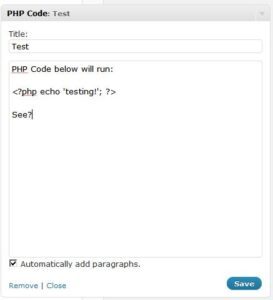Features to Include When Building Websites for Clubs
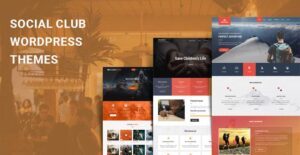
What has long been indispensable for companies is also becoming increasingly relevant for associations & clubs – without an Internet presence, one remains invisible to many in the digital age. A club’s homepage is an ideal way for an association to present itself on the internet. It serves as a central contact point, provides club members and interested parties with important information and, last but not least, makes it possible to reach new members and sponsors.
Basic Legal Framework
Not only members of the association and interested parties will visit your clubs homepage, but possibly also authorities, lawyers or competitors. In order to exclude the danger of copyright warnings and such from the outset, it is important to comply with the legal framework for the operation of a homepage.
Domain Name
The domain name can be understood as the address under which a homepage can be found on the internet. It should of course fit the association or at least refer to the association in order to make it clear what the homepage is about. Ideally, you should use the name of the association, such as ourclubname.com.
In principle, you can choose any available domain name, but you should ensure that no rights to the name are violated. This may be the case if you use the name of a town or municipality, and there may also be a justifiable risk of confusion with other domain names.
Copyright and personal rights
The same legal framework applies to a homepage as it does to an association newspaper: All content published on an association homepage must of course not infringe copyright or personal rights. Persons who are clearly recognizable in photos have the right to their own image and must consent to publication.
Imprint and privacy policy
A club’s homepage is subject to the imprint obligation. It is not sufficient to provide only the name of the association and an e-mail address. Make sure that your imprint contains all the mandatory information to avoid the risk of a warning notice.
Furthermore, an association’s homepage must comply with the requirements of the Data Protection Regulation (DSGVO) and inform visitors with a data protection statement about the purpose for which data is collected and stored. The data protection statement must not be included in the imprint.
Liability and disclaimer
It is important to examine all aspects relating to data protection and to take them into account when creating the club’s homepage. If legal disputes do arise, the association as domain owner is liable.
In case of doubt, it may be worthwhile to commission a specialized lawyer to check the legal conformity of the homepage. If justified warnings are nevertheless issued, the lawyer can be held liable.
Important elements of a club homepage
In principle, an association’s homepage can be designed as individually as the association itself. However, it is advisable to think about a clear concept for the creation. The structure of the homepage should be well thought out, so plan enough time for the conception.
Which elements should be included on your association’s homepage and which should be left out depends not least on the respective objectives. In any case, the most important information should be recognizable at first glance. If the club is only to be introduced briefly and information about important dates is to be provided, a homepage with only a few categories will suffice:
1.Homepage
The home page is the first thing visitors to your club’s website will see. It is a good idea to present the club logo, the club name and an appealing and inviting picture on the homepage. A short welcoming text, perhaps also the association’s motto or philosophy, invites visitors and makes it immediately clear what it is all about.
Important information, such as upcoming events, is also suitable for placing on the homepage. The individual categories and subcategories of the homepage should be easy to reach via a clear menu. Here, too, there are no fixed rules, but overall the homepage should remain uncluttered.
Once the structure of the homepage is in place, the individual categories must be filled with content. Texts should of course be free of errors, easy to read and offer real added value for the reader. In principle, an association homepage can have any number of categories and functions.
However, to make it easier for visitors to find their way around the homepage, it makes sense to limit the scope to the essentials. This is important so that visitors can quickly find what they are interested in and do not have to spend a long time searching.
2.News & Dates
Inform visitors to your club’s homepage about everything that is happening in your association and what changes have taken place recently. Present new projects, announce dates for upcoming festivities or club meetings and post current tables, training times, etc. Naturally, this category or sub-page needs to be updated most often.
3.About us (introductions of important people)
This category can be used to introduce important functionaries, board members, coaches or club members who have rendered outstanding services to the club. There is also no objection to presenting all members of the club, such as teams or departments, in detail. However, remember to obtain the consent of all persons involved.
4.Facts & figures about the club
History and tradition, number of members, background information on the club should not be missing from any club homepage. It is a good idea to introduce the founder(s), highlight past successes and milestones as well as the club’s philosophy or motto, and provide insights into the history of the club.
5.Offers, Services & Membership
The offers and services of the association are of particular interest to interested parties and potential new members. This is where visitors to the homepage should be able to find all the information they need about joining or becoming a member. Give visitors as many answers to potential questions as possible to make the most important information available without a phone call.
What special benefits does the association offer beyond mere membership? Is there the possibility of a trial membership? If the possibility of a binding registration is given on the homepage, it makes sense to also make the association’s statutes available here.
6.Contact details & directions
Provide important addresses, telephone numbers and e-mail contact details so that visitors to your website can quickly get in touch with the most important contact persons. A detailed description of how to get to the association’s facilities should also be included, as well as information on opening hours and how to reach us by phone.
7.Impressum
As already mentioned, the impressum is of fundamental importance for an club’s homepage. It is advisable to check the specific requirements for the impressum with the higher authorities. Sample templates can help to create an imprint that complies with all legal requirements.
8.Data protection statement
You can also use sample templates for the data protection declaration, which is also mandatory. Make sure that the data protection statement is clearly visible and easy to access for visitors to your website.
Other elements
If the homepage is also intended to provide insights into the life of the association, to attract new members and sponsors or to raise the profile of the association, the homepage must be designed more extensively. The larger the association and the more members it has, the greater the density of information, which increases the design possibilities.
It can be helpful to visit the homepages of other associations to get an overview of the possibilities and different approaches. In addition to the elementary elements, the following categories and functions are possible, for example:
1.Picture gallery/ videos
Club celebrations, tournaments or concerts – picture galleries are ideal for depicting club life in all its facets and giving visitors an insight into everyday club life. In the case of pictures taken by others, you must take care to indicate the respective source; in the case of internal club photos, you need the consent of the persons in the picture.
Without consent, pictures may only be used if they are taken in connection with meetings or processions, or if the persons are only accessories to a larger section of the picture.
2.Specialised information
Many clubs deal with subjects that are less well known to the general public than football, bowling or singing. Under certain circumstances, it may be a good idea to group subject-specific information in a separate category and thus give visitors the opportunity to learn more about the subject matter.
3.Press section
A press section can underline the credibility and relevance of an association. Reports from local or national media can be posted and collected here to give visitors an external view of the association.
Since press reports are also subject to copyright, it is important to clarify in advance whether the respective article may also be published on the association’s homepage. If you decide to have a press section, you must appoint a press officer and include their contact details in the imprint.
4.Partners & Sponsors
If available, it makes sense to give partners and sponsors space on the club’s homepage, after all they are also an elementary part of the club. It is a good idea to briefly describe and introduce the sponsors and partners.
Caution is advised, however, if a link takes you to a sponsor’s homepage. This can be seen as an advertising service of the association, which can call into question the non-profit status of a club. To avoid tax disadvantages, you should therefore refrain from linking to sponsors.
5.Downloads
A download function allows visitors to easily download certain files, such as the calendar of events for the coming season, registration forms, the club newspaper in digital form or pictures, audio or video files.
6.Newsletter
Newsletters are a simple and inexpensive way of keeping club members and interested parties up to date. A corresponding function allows site visitors to enter their e-mail address in a registration form and subscribe to the newsletter. There are many free and commercial Newsletter Plugins available.
7.Forum/ Social Media
For a long time it was customary to provide a forum within the framework of an association’s homepage in which association members could exchange information with each other. However, since forum operators are liable for content posted by third parties, the forum must be constantly monitored and infringing content must be deleted immediately.
Since this task can take up a lot of time, there has been an increasing tendency to use social networks such as Twitter and the like for internal communication. By adding a “Follow” button to an association’s homepage, visitors to the site can follow the association’s account with just one click.
8.Closed members area
There may be information that should not be accessible to all visitors to the club’s website. This could be contact lists, transcripts of sponsor meetings or minutes of meetings. If content not intended for the general public is also to be published on the association’s homepage, it is a good idea to set up a password-protected members’ area.
9.Donations
Many associations, especially small and non-profit ones, depend on donations to finance their work. So why shouldn’t the association’s homepage be used for this purpose? By using a donation button, visitors to the homepage can make donations without much effort and thus actively support the association. There are numerous payment service providers, such as PayPal, that make it easy to implement such a button.
Conclusion
A Club homepage makes sense in many respects, especially in order to involve all visitors interested in the association in its life at any time. In addition to taking legal requirements into account, it is especially important to think about a well thought-out structure for the homepage. The most important points to consider when creating an association homepage are as follows:
- Establish responsibilities and adhere to the legal framework and requirements when creating it.
- Think about a good structure for the homepage and establish which elements/categories and functions you need.
- In the case of photos, images, audio or video files, it is important to respect copyright and personal rights and, in case of doubt, to obtain the consent of the respective persons for publication.
- Find out about the advantages and disadvantages of the various options for creating a homepage and decide on a solution that best suits your needs and requirements.
- Always keep the homepage up to date and publish new content regularly.
Do you need a Website for your Club, Association or Non Profit Organization? Please contact me for Advice.
Recommended Plugins to use
The Events Calendar
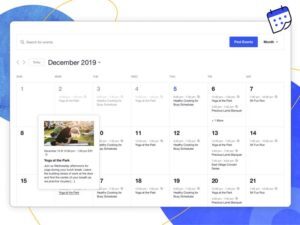
Google Map Plugin
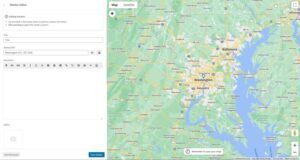
Contact Form 7
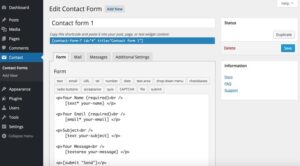
Simple Sitemap
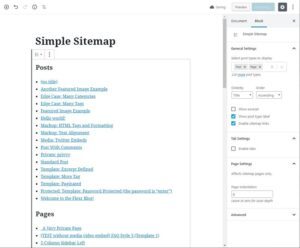
Google XML Sitemap
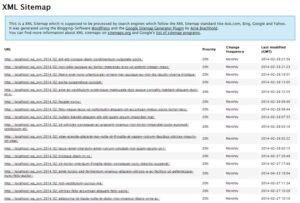
Google Analytics by Yoast
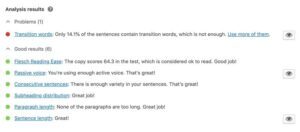
PHP Code Widget
